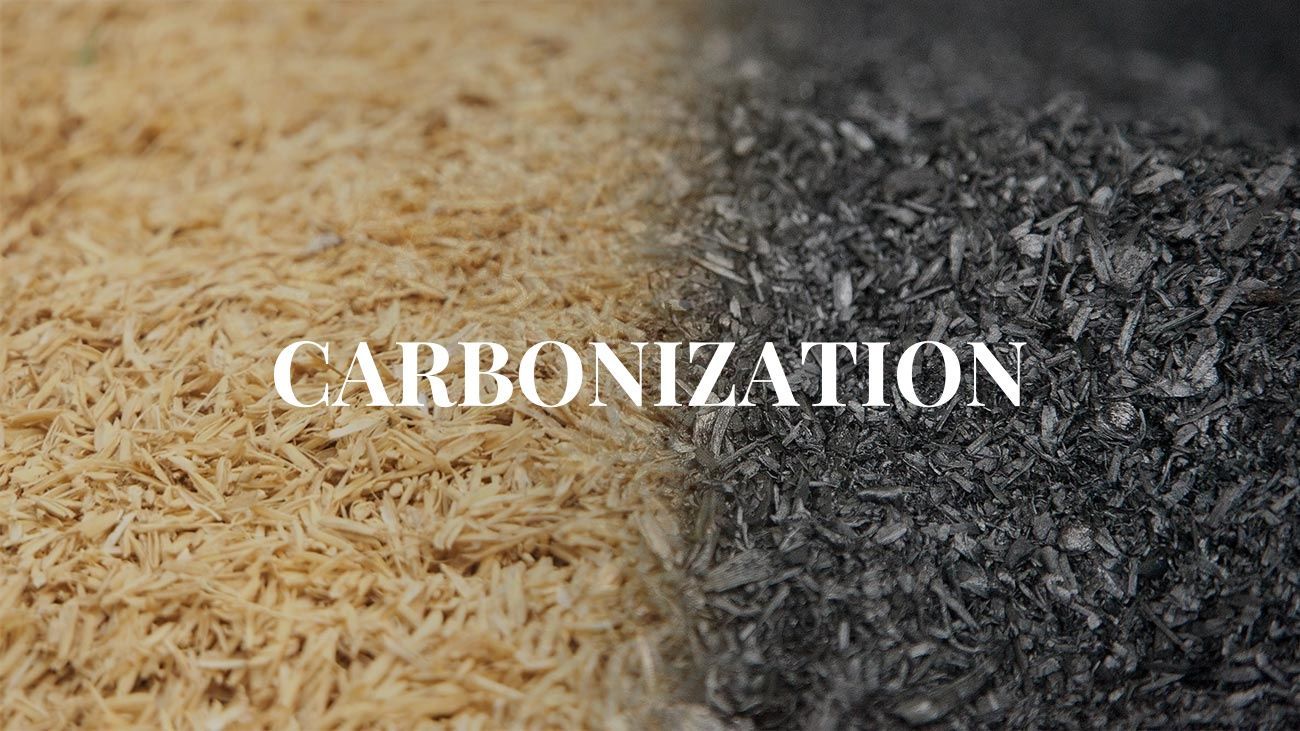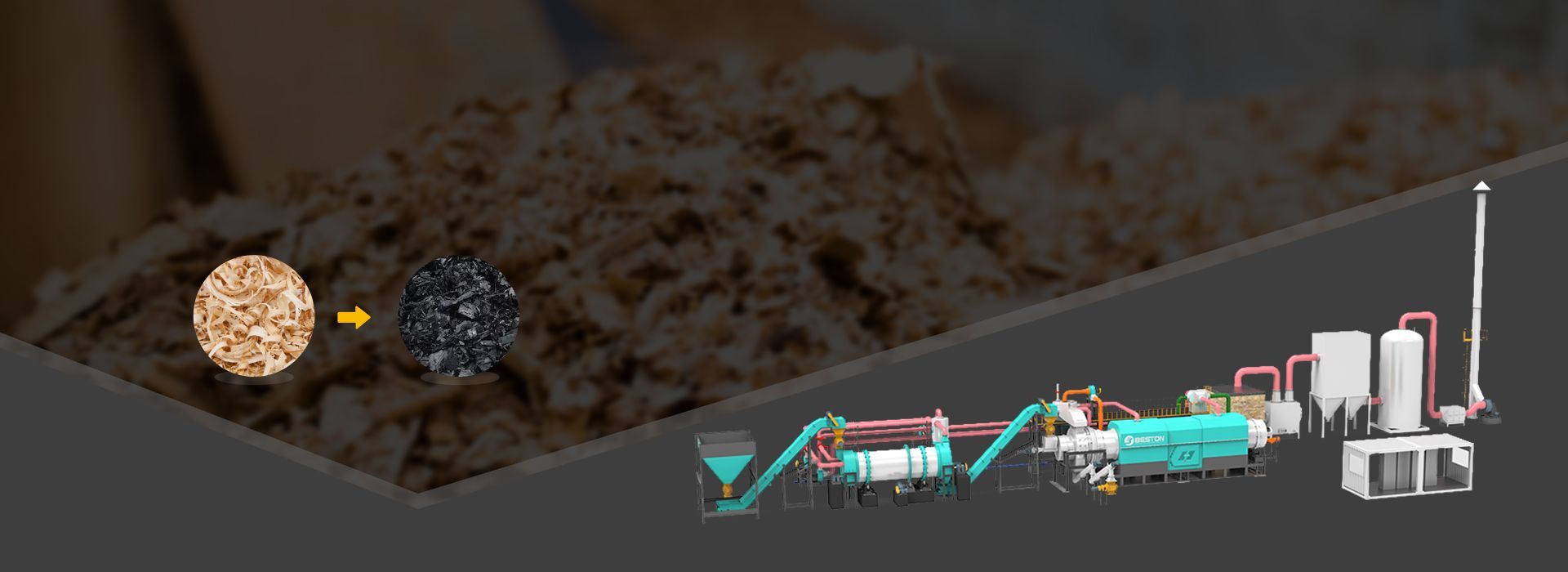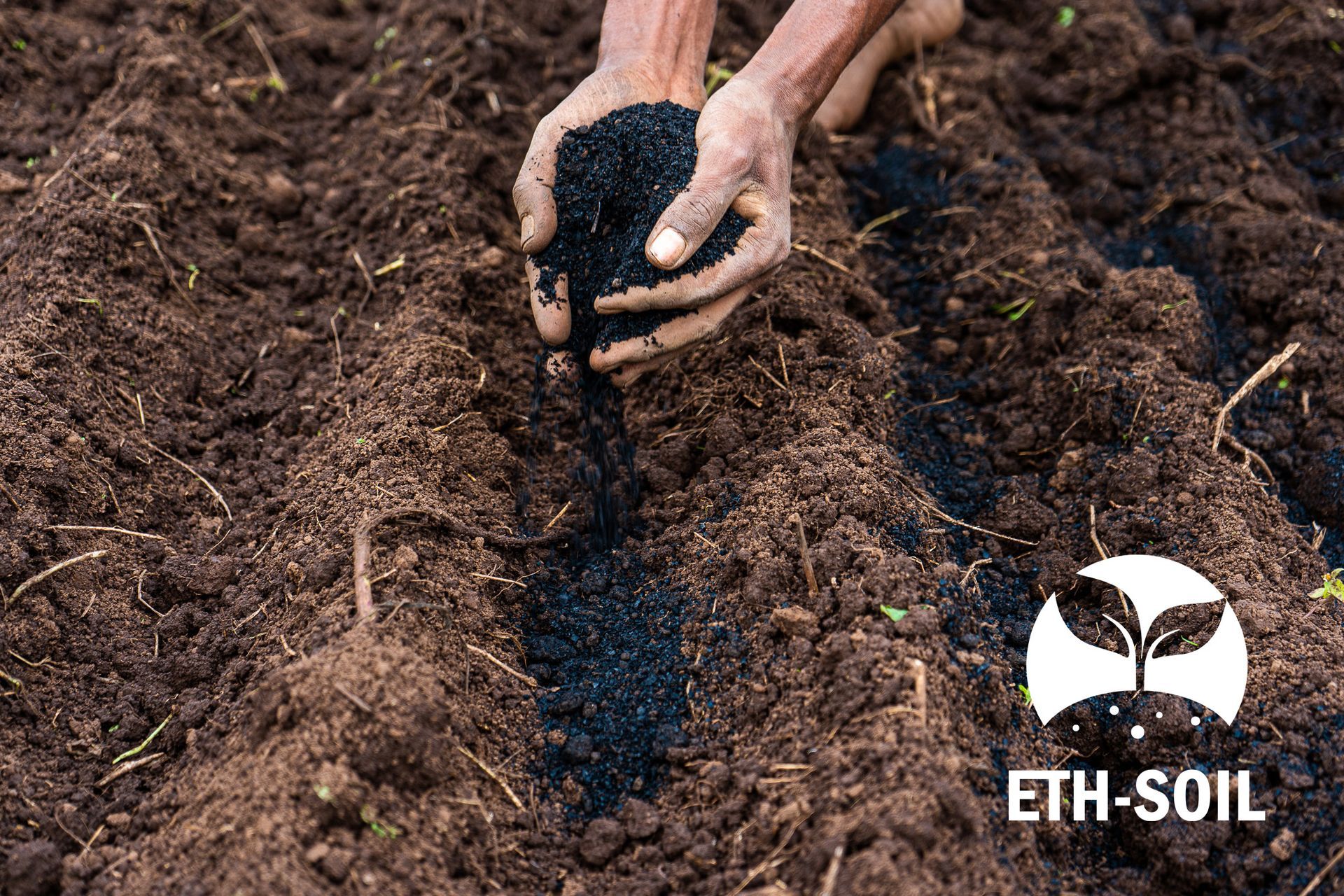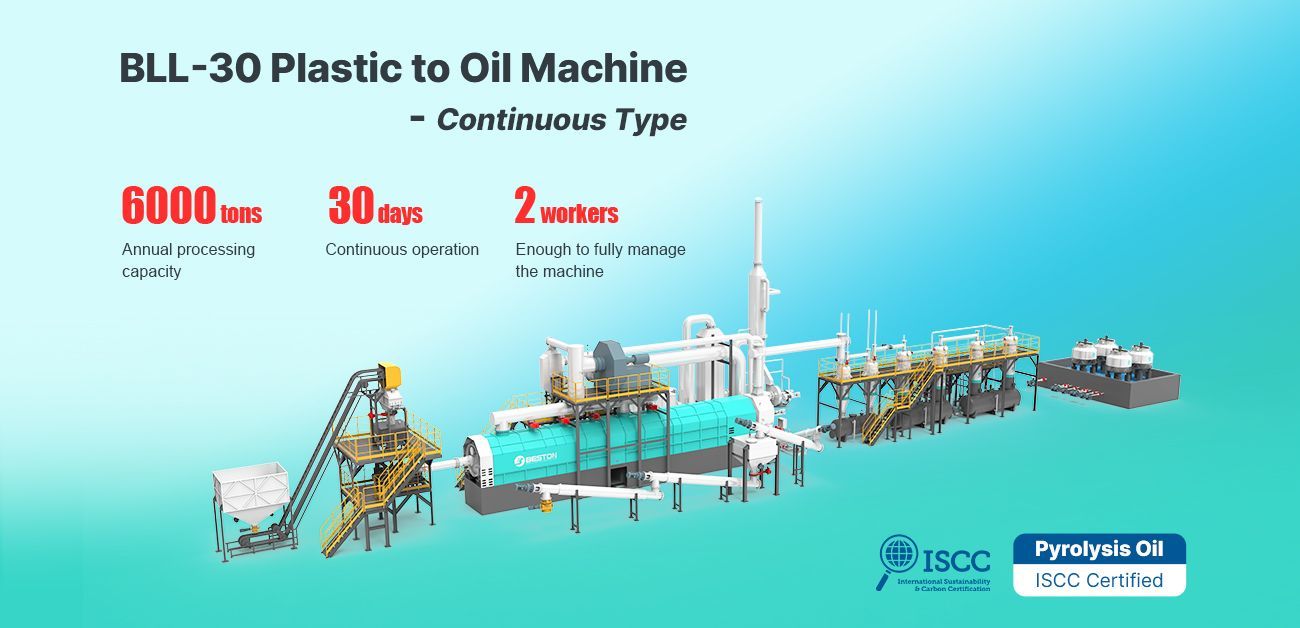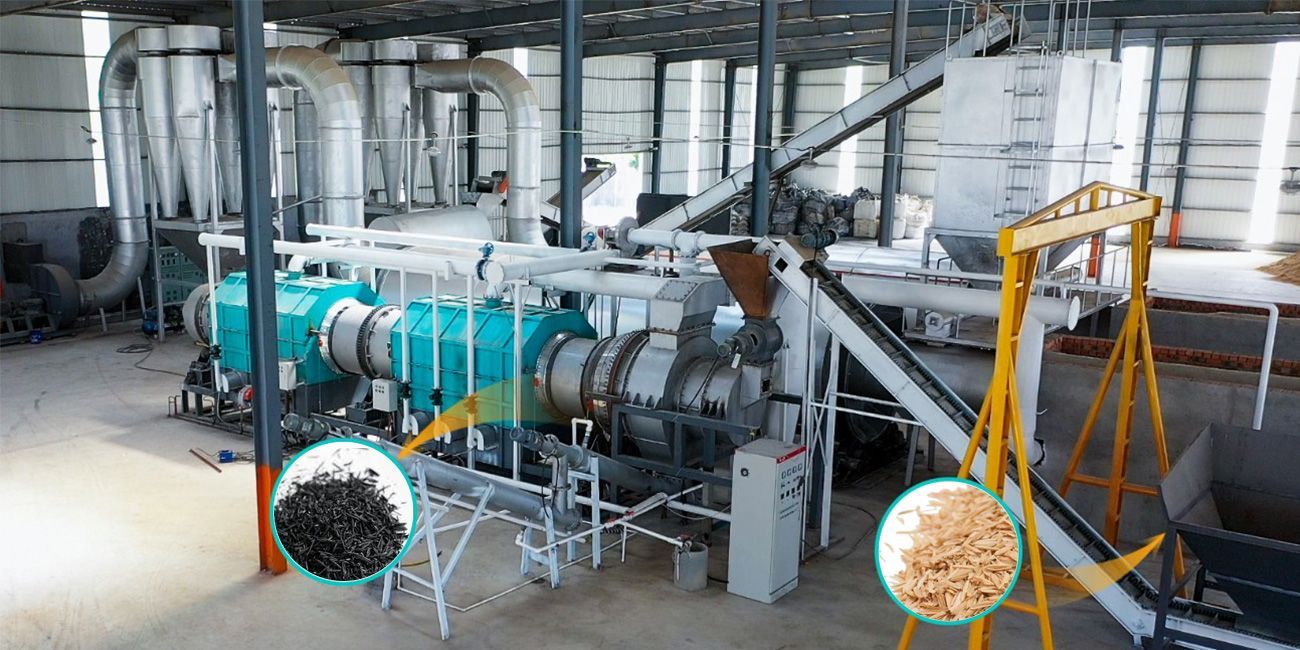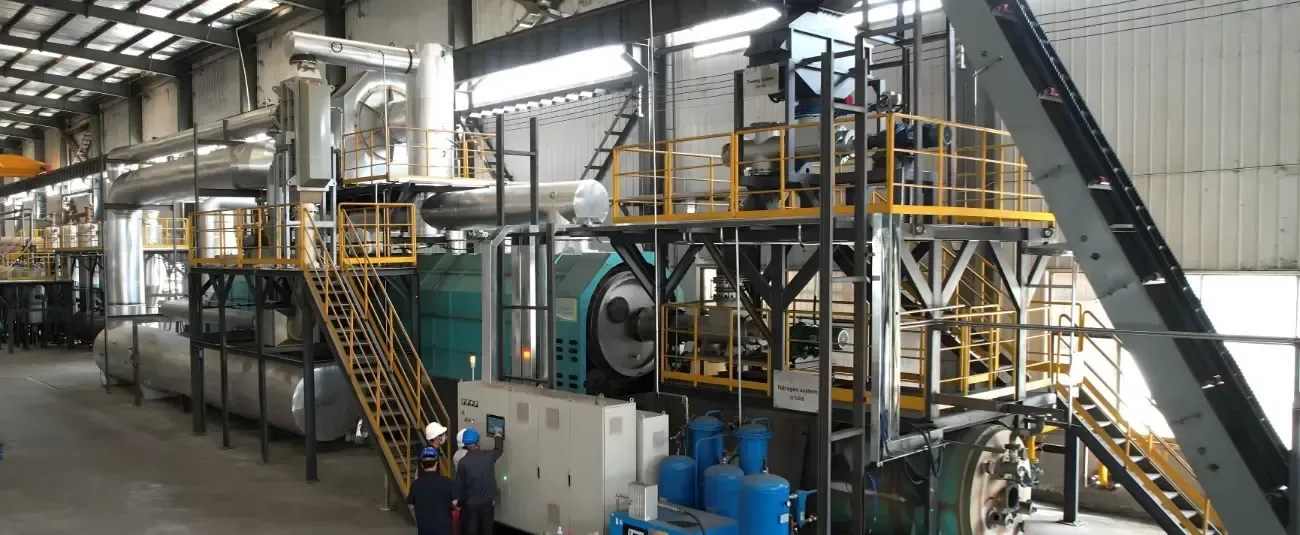Exploring the Continuous Operation Model in Biomass Pyrolysis Machine
The Future of Sustainable Energy
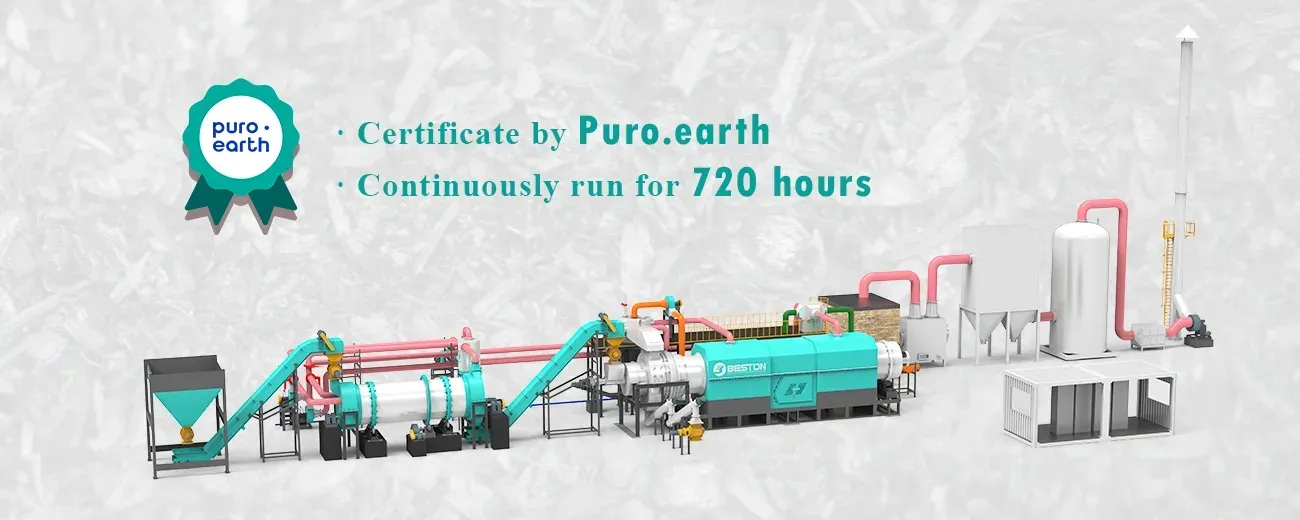
In recent years, biomass pyrolysis has emerged as a powerful solution to both waste management and energy production. By converting organic materials like wood chips, agricultural residues, and even municipal waste into valuable products like bio-oil, charcoal, and syngas, biomass pyrolysis presents an eco-friendly alternative to traditional waste disposal and fossil fuel consumption. One of the most significant advancements in this technology is the adoption of a continuous operation model in biomass pyrolysis machines. In this blog post, we’ll explore what a continuous operation model is, its benefits, and why it’s a game-changer for the biomass energy sector.
What is the Continuous Operation Model in Biomass Pyrolysis?
Traditionally, biomass pyrolysis plants operated on a batch process, meaning that organic materials were loaded into the pyrolysis reactor in cycles. After a batch was processed, the machine would need to cool down before another batch could be introduced. This method, while effective, led to periods of downtime, decreasing overall efficiency.
Enter the continuous operation model. In this system, the biomass is fed continuously into the pyrolysis machine, and the products (like bio-oil, syngas, and char) are extracted simultaneously and continuously. This setup allows the system to run 24/7, maximizing throughput, energy output, and efficiency without the interruptions typical of batch processing.
How Does Continuous Operation Work?
The continuous operation model works by incorporating automated feeding systems, real-time monitoring, and advanced heat management techniques. Here’s how it works:
- Continuous Feeding: Biomass feedstock (e.g., wood chips, agricultural waste, etc.) is automatically fed into the pyrolysis reactor in a steady stream. This ensures that the reactor is consistently processing material, without the delays associated with loading and unloading materials.
- Thermal Management: Continuous operation requires efficient heat management. The system maintains consistent temperatures (typically between 400°C to 800°C) to ensure optimal pyrolysis conditions. Advanced sensors and automation systems help maintain this balance.
- Simultaneous Product Extraction: As the biomass is processed, the products—such as bio-oil, syngas, and charcoal—are extracted in real time. Each of these by-products is separated and collected for use, and some (such as syngas) can even be used to fuel the system, reducing the need for external energy sources.
- Automated Systems: Modern continuous pyrolysis machines are equipped with automated systems for feeding, processing, and product collection. These systems are often linked to monitoring software, allowing operators to track the performance of the machine in real time and make adjustments as needed to optimize production.
Key Benefits of Continuous Operation in Biomass Pyrolysis
1.Increased Efficiency and Throughput
The most obvious advantage of the continuous operation model is the increased efficiency it offers. Because the system operates without interruption, there is a higher throughput compared to traditional batch systems. Continuous feeding allows the machine to process more biomass material within a shorter time frame, leading to a higher yield of bio-oil, syngas, and charcoal.
2. Maximized Energy Production
The continuous operation model maximizes energy production by maintaining constant processing and energy output. Unlike batch systems that may have periods of downtime, continuous pyrolysis plants can produce energy and useful products around the clock. This makes them ideal for applications requiring consistent energy supply, such as in bioenergy generation or in large-scale waste-to-energy projects.
3. Lower Operating Costs
By reducing downtime and increasing throughput, the continuous operation model lowers operational costs. There’s less need for manual intervention between batches, and fewer labor hours are required for feeding the system, monitoring temperatures, and handling the end products. Additionally, the system’s ability to self-sustain through syngas combustion helps to reduce external fuel costs.
4. Enhanced Product Quality and Consistency
The continuous process provides more consistent product quality. Since the process doesn’t stop and restart with every batch, the operating conditions (temperature, pressure, and feed rate) remain more stable, leading to more uniform bio-oil and charcoal quality. This consistency is critical for industries that rely on high-quality fuels and materials, such as the chemical, agricultural, and energy sectors.
5. Sustainability and Lower Environmental Impact
By ensuring a constant and efficient conversion of biomass into valuable by-products, continuous pyrolysis systems help improve the sustainability of waste management. The system operates on renewable biomass feedstock, converting waste materials into useful products and reducing landfill dependence. Additionally, as the syngas produced is used to fuel the machine, there is a significant reduction in carbon emissions compared to traditional waste-to-energy processes.
Conclusion
The continuous operation model in biomass pyrolysis plant is transforming the landscape of renewable energy production and waste management. By offering higher efficiency, increased throughput, and consistent product quality, continuous pyrolysis plants are becoming a preferred solution for businesses seeking sustainable and cost-effective ways to convert biomass into valuable resources. With applications spanning energy production, waste management, agriculture, and chemical industries, the continuous pyrolysis system has the potential to play a pivotal role in the global transition to a more sustainable and circular economy. As technology continues to evolve, it’s likely we’ll see even more innovative solutions that push the boundaries of what continuous biomass pyrolysis can achieve.
